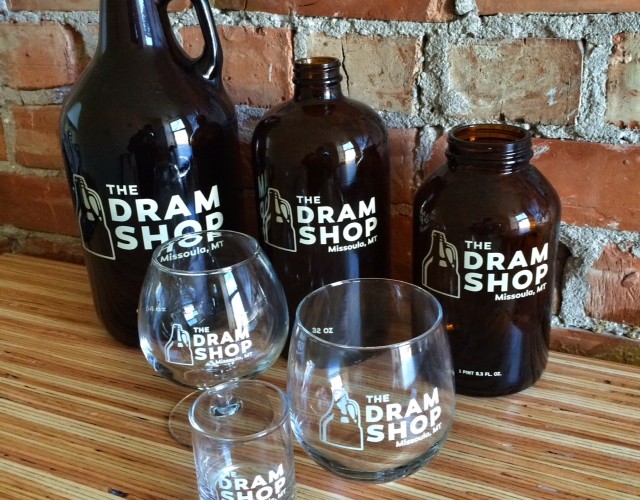For a lot of folks these days the growler has become a ubiquitous part of life. Often times, the story goes something like this: You have a small herd of growlers roaming around somewhere between your kitchen and garage. You cull a couple from the herd here and there to take down to your local brewery or growler fill station and fill them to the brim with your favorite beverage. You take them home or on an adventure, and enjoy the libation within a few days. You try to remember to rinse them out when they’re empty. We emphasize the word ‘try’ here. Then, they probably roll around in the backseat of your car for a while before being returned to the herd. And the process can begin again…
That story may sound familiar, or maybe not, but the history of the growler in the U.S. has more in common with the way we use them now than you might think. And in many ways, The Dram Shop’s model is more similar historically to the way growlers were used originally in this country.
The use of growlers was, as is usual, a case of necessity being the mother of invention. It may be hard to believe, but there was a time in this country when beer was largely unavailable outside of a tavern or saloon. In the mid 1800’s, with the lack of pasteurization and modern bottling techniques, large scale bottling was practically non-existent. Bottles that were available were out of the price range of ordinary citizens. It sounds crazy, we know. And apparently folks back then thought so too, which is why growlers came to be used.
Growlers originally were buckets made of tin, glass, or pottery that would be brought to a tavern and filled on the spot. The growlers would then be taken to a job site or home, often times by a young men referred to as “bucket boys.”
The process of growler delivery was called “rushing the growler,” as most growlers had no lids and were to be consumed immediately. This began the tradition of a growler being for fresh beer. We like to think of them as a ‘mobile pitcher’. Multiple growlers would be carried by hanging the handles on a pole. The pole would then be carried, moving 6-8 growler buckets at once.
As the temperance movement that eventually brought about prohibition in 1920 gained speed, the act of filling growlers was outlawed in as many as twenty cities across the US. The proud tradition then lay dormant until it was revived by the modern craft beer industry in the late 1980’s.
So the next time you stop by The Dram Shop to fill a growler, and you don’t have time to stay for a cold one, just tell us you’d love to stay but you’ve got to “Rush the growler!”
Although we don’t sell tin buckets as growlers, we do sell a variety of glass, insulated and plastic growlers (for wine too!) to fit your needs. Here are our three different size amber glass growlers, and you can find more on our shop page.
Read more about The Dram Shop in the Missoulian’s Business Section and in the Missoula Independent’s recent “12 Things to Love About Missoula” (see #4)









Recent Comments